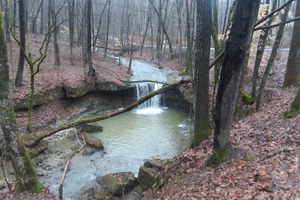About
This last remaining Bilby Tower. From 1926 to 1984, the United States Coast and Geodetic Survey used these portable steel towers to elevate siting instruments above various obstructions during geodetic surveys.
Traditional surveying relies on having a clear line of sight between points. Hills, trees, and other obstacles in the landscape meant that surveyors needed to go up in order to get a good vantage point. And the instruments they used needed to be stable in order to make accurate observations. Surveyors built a new wooden tower over each survey mark. These single-use towers were expensive and time-consuming to build.
But in 1926, Chief Signalman Jasper Sherman Bilby came up with a better solution. Bilby, who worked for the C&GS from 1884 to 1937, designed a tower that was stable, light, and adjustable in height. Most importantly, the structure was easy to take down, transport to a new location, and rebuild. Builders could put up a tower in a single day, and take them down in about half the time.
The design of the Bilby Tower actually consists of a tower within a tower; the inner tower supported the instruments while the surveyors climbed the outer tower. The instruments were thus isolated from any vibrations caused by the surveyors, increasing their accuracy.
The C&GS used Bilby Towers from 1927 to 1984, and the design was shared with a number of other organizations. In 2013, this particular tower was moved from the Barataria Wildlife Preserve in Louisiana to Osgood, Indiana, where Jasper Bilby once lived.
Related Tags
Published
June 8, 2022





































